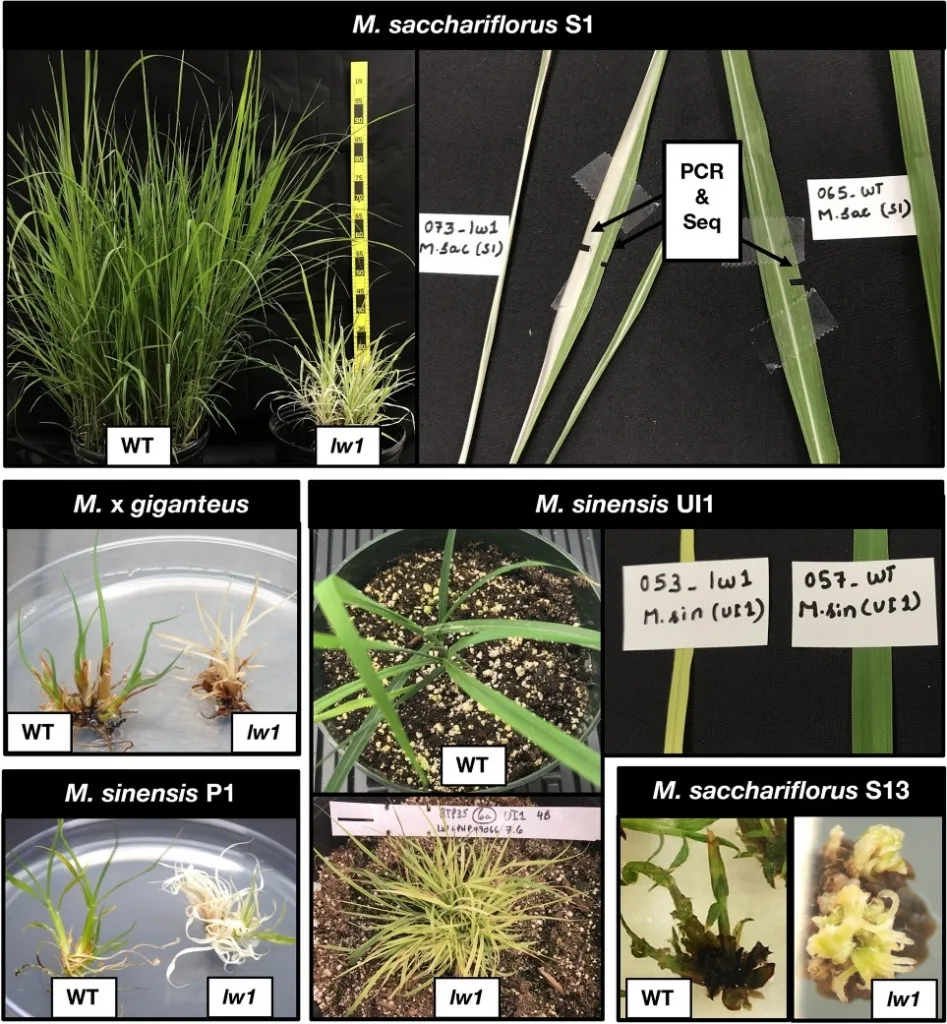Transformation and Gene Editing in the Bioenergy Grass Miscanthus
Themes: Feedstock Production
Keywords: Biomass Analytics, Genomics
Citation
Trieu, A., Belaffif, M., Hirannaiah, P., Manjunatha, S., Wood, R., Bathula, Y., Billingsley, R.L., Arpan, A., Sacks, E.J., Clemente, T.E., Moose, S.P., Reichert, N.A., Swaminathan, K. Dec 28, 2022. “Transformation and Gene Editing in the Bioenergy Grass Miscanthus.” Biotechnology for Biofuels and Bioproducts 15 (148). DOI: 10.1186/s13068-022-02241-8.
Overview

Miscanthus, a C4 member of the family Poaceae, is a promising perennial crop for bioenergy, renewable bioproducts, and carbon sequestration. Species of interest include nothospecies Miscanthus x giganteus and its parental species M. sacchariflorus and M. sinensis. Use of biotechnology-based procedures to genetically improve miscanthus, to date, have only included plant transformation procedures for introduction of exogenous genes into the host genome at random, non-targeted sites.
Data
Download (21.9 KB) includes:
- Lemonwhite gRNAs
- Miscanthus lines
- Culture Initiation
- Media Additives